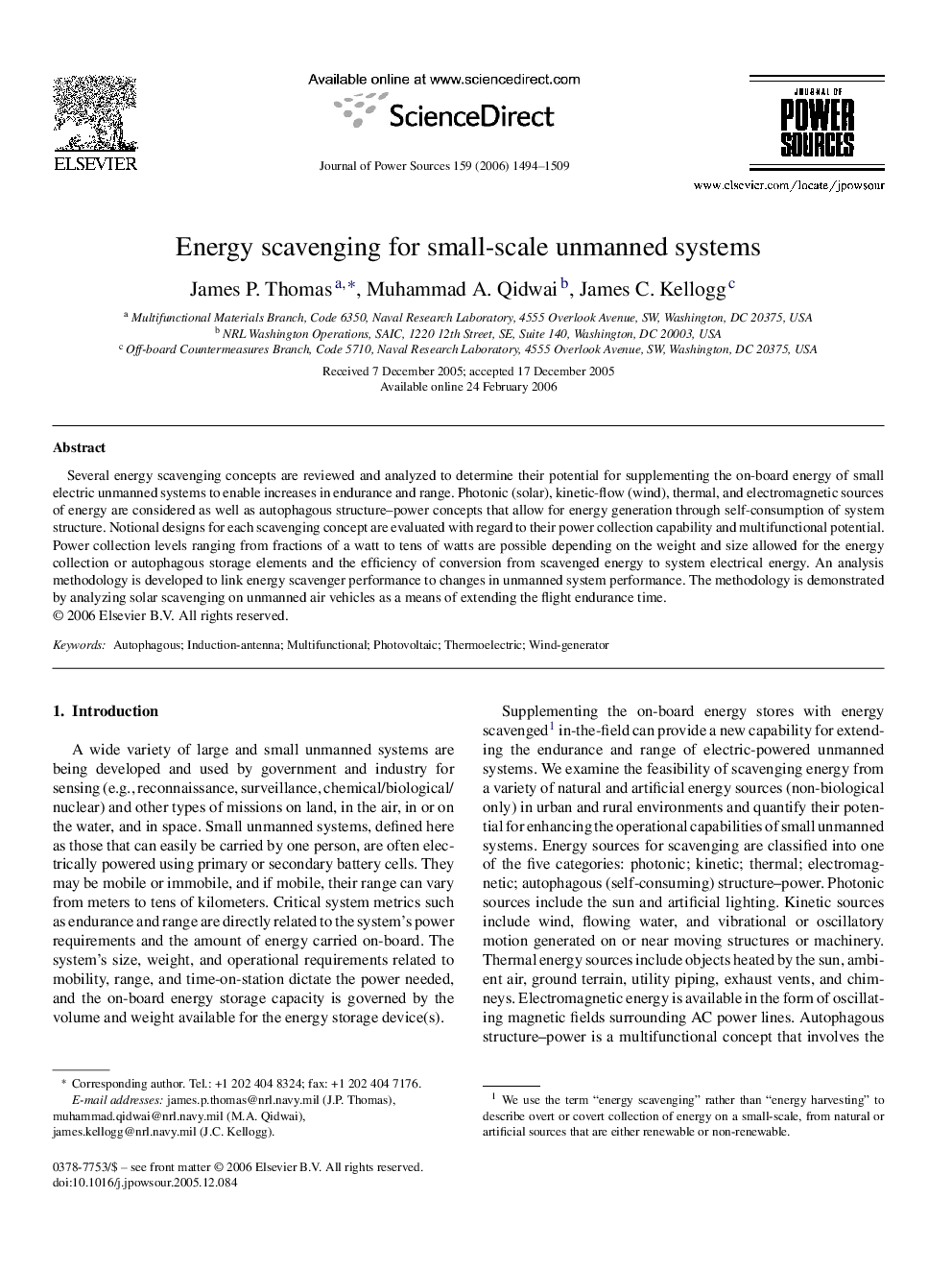| Article ID | Journal | Published Year | Pages | File Type |
|---|---|---|---|---|
| 1287320 | Journal of Power Sources | 2006 | 16 Pages |
Several energy scavenging concepts are reviewed and analyzed to determine their potential for supplementing the on-board energy of small electric unmanned systems to enable increases in endurance and range. Photonic (solar), kinetic-flow (wind), thermal, and electromagnetic sources of energy are considered as well as autophagous structure–power concepts that allow for energy generation through self-consumption of system structure. Notional designs for each scavenging concept are evaluated with regard to their power collection capability and multifunctional potential. Power collection levels ranging from fractions of a watt to tens of watts are possible depending on the weight and size allowed for the energy collection or autophagous storage elements and the efficiency of conversion from scavenged energy to system electrical energy. An analysis methodology is developed to link energy scavenger performance to changes in unmanned system performance. The methodology is demonstrated by analyzing solar scavenging on unmanned air vehicles as a means of extending the flight endurance time.
